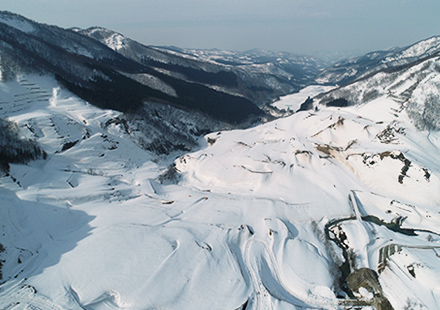What is Naruse Dam?
About the dam construction project
Upon completion, Naruse Dam will be the largest trapezoidal CSG dam in all of Japan.
The dam will serve multiple functions, including disaster prevention, preservation of the river basin environment, maintenance and replenishment of tap water and agricultural irrigation water, hydroelectric power generation, and more.
The dam will also contribute to the development and convenience of the surrounding area.
Construction is stopped in winter because of heavy snowfall. However, even in these harsh conditions we are implementing the latest technology such as ICT construction, Japan’s unique CSG construction method, and others, and we dedicate ourselves to building the dam safely, securely, and efficiently.
Construction Project Outline
- Name of Construction Project
- Naruse Dam Construction Project
- Owner
- Ministry of Land, Infrastructure, Transport and Tourism Tohoku Regional Development Bureau (Naruse Dam Construction Office)
- River System
- Class A river, Naruse River belonging to the Omono River System
- Construction Site
- Tsubakigawa, Higashinaruse-mura, Ogachi-gun, Akita Prefecture
- Construction Company
- KAJIMA, MAEDA, TAKENAKA CIVIL ENGINEERING Joint Venture
- Construction Period
- From May 9, 2018 to December 11, 2026 (3,138 days, about 103 months)
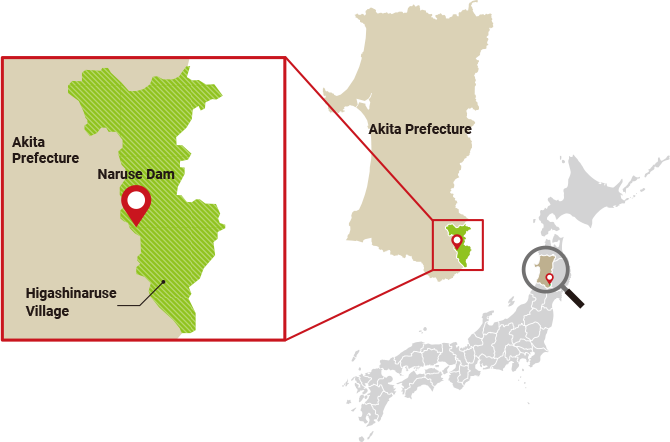
Naruse Dam Data
- Elevation at the top of the dam
- 532.5m the highest in the Tohoku region
- Dam Body Height
- 114.5m the fourth highest in the Tohoku region
- Crest Length (length of the dam’s highest point)
- 755.0m the second longest in the Tohoku region
- Dam Body Volume
- 4.85 million m3
- Reservoir Area (reservoir lake surface area)
- 2.26km2
- Water Storage Amount
- 78.5 million m3
●This dam will be the highest CSG dam in all of Japan.
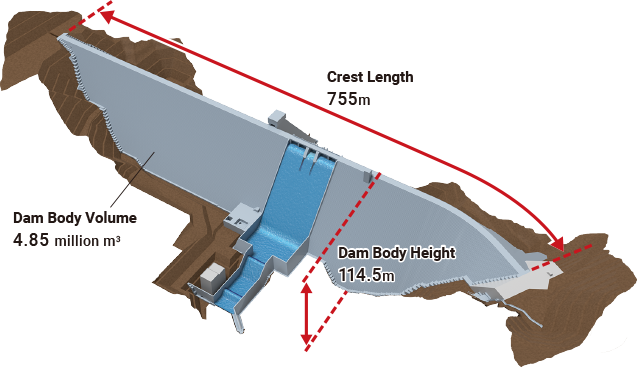
Objectives of Naruse Dam
Naruse Dam will serve 5 important roles and objectives upon completion.
Objective 1
Reduction of flood damage (flood control)
When heavy rain occurs, some of the running water will be stored in Naruse Dam to regulate the water flow in the Naruse, Minase, and Omono river basins. This will reduce flood damage in surrounding municipalities.
The maximum water flow rate at the Naruse Dam site is planned to be 460m3 per second, of which flood control will be performed at 410m3 per second.
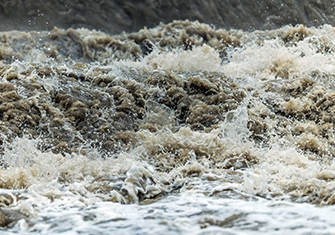
Objective 2
Adjustment of water flow amount during drought (maintenance of normal river flow)
When the amount of water in the Naruse and Minase rivers is low, the amount of water will be increased by releasing water from Naruse Dam into these rivers. This will contribute to the preservation and protection of the ecosystem and the flora and fauna that inhabit the rivers as well as to the protection of the natural landscape.
Downstream of the Naruse Dam, the dam will help maintain and improve the normal function of running water, such as replenishing the existing amount of river water.
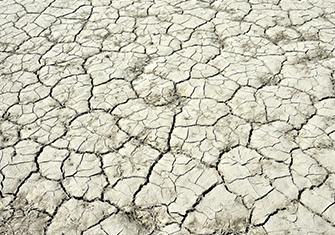
Objective 3
Replenishment of irrigation water for agricultural use
The Hiraka Plain, which spreads across the middle reaches of the Omono River, is one of the richest farmlands in northern Japan. However, in recent years water has been scarce on several occasions. Naruse Dam will be able to provide farmers with a stable source of irrigation water during drought periods.
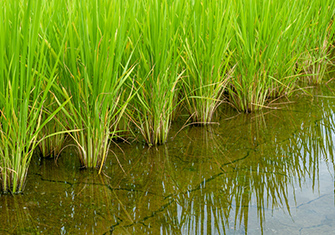
Objective 4
Increasing local water supplies
Wells are still widely used in the Omono River area, and there is no extensive water supply network. Recently, underground water levels are falling, frequently leading to water shortages. To solve this issue, Naruse Dam will be established as a new source of water. It will be possible to provide downriver cities such as Yuzawa, Yokote, Daisen, and others with a maximum of an additional 13,164m3 of running water per day.
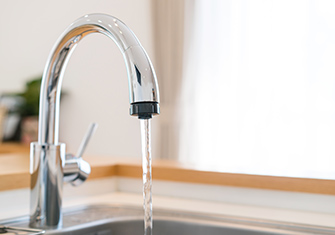
Objective 5
Hydroelectric Power Generation
In conjunction with Naruse Dam, a hydroelectric power station will also be built: Naruse Power Station (provisional name). Using the force of the water released to power a generator, Naruse Dam will generate a maximum output of 5,800 kW at a time and an annual power generation of 23,038 MWh. This is equivalent to the amount of electricity needed for approximately 4,900 households.
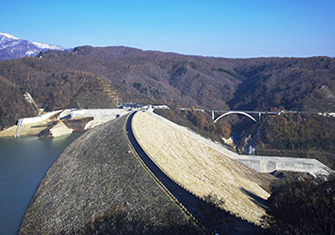
Isawa Dam
Special Characteristics of Naruse Dam
Characteristic 1
Trapezoidal CSG Dam
The model being used to build Naruse Dam is that of a trapezoidal CSG dam, which uses the CSG construction method developed in Japan. The trapezoidal CSG dam model used to build Tobetsu Dam (Hokkaido) in 2009 was the first of its kind in the world, and is the latest dam construction method that produces high quality while increasing the efficiency of construction material use, contributing to environmental conservation and shortening the overall construction period.
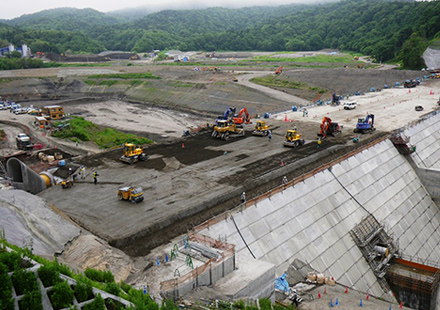
Characteristic 2
ICT Construction
The Naruse Dam Construction Project employs a number of mechanized and automated construction technologies using the latest technological innovations, including the next-generation construction production system “A4CSEL (Quad Accel)” developed by Kajima Corporation, which automates construction machinery. The introduction of such construction technology has various merits such as the improvement of work productivity, efficiency, and improvement of construction safety.
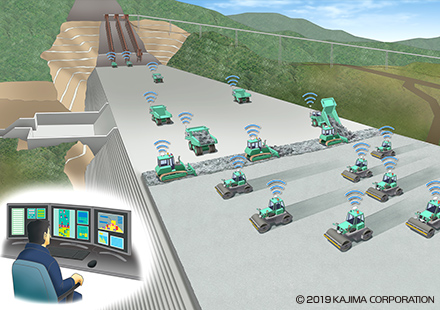
Characteristic 3
Construction in a region with heavy snowfall
The area surrounding Naruse Dam has some of the heaviest snowfall in Japan, where snowfall up to nearly 3m can be observed in many places during winter. As such, construction cannot be carried out in winter, and the actual construction period only lasts about 6 months a year. Based on these construction conditions, various measures have been taken to ensure that the construction project proceed efficiently within this short construction period.
